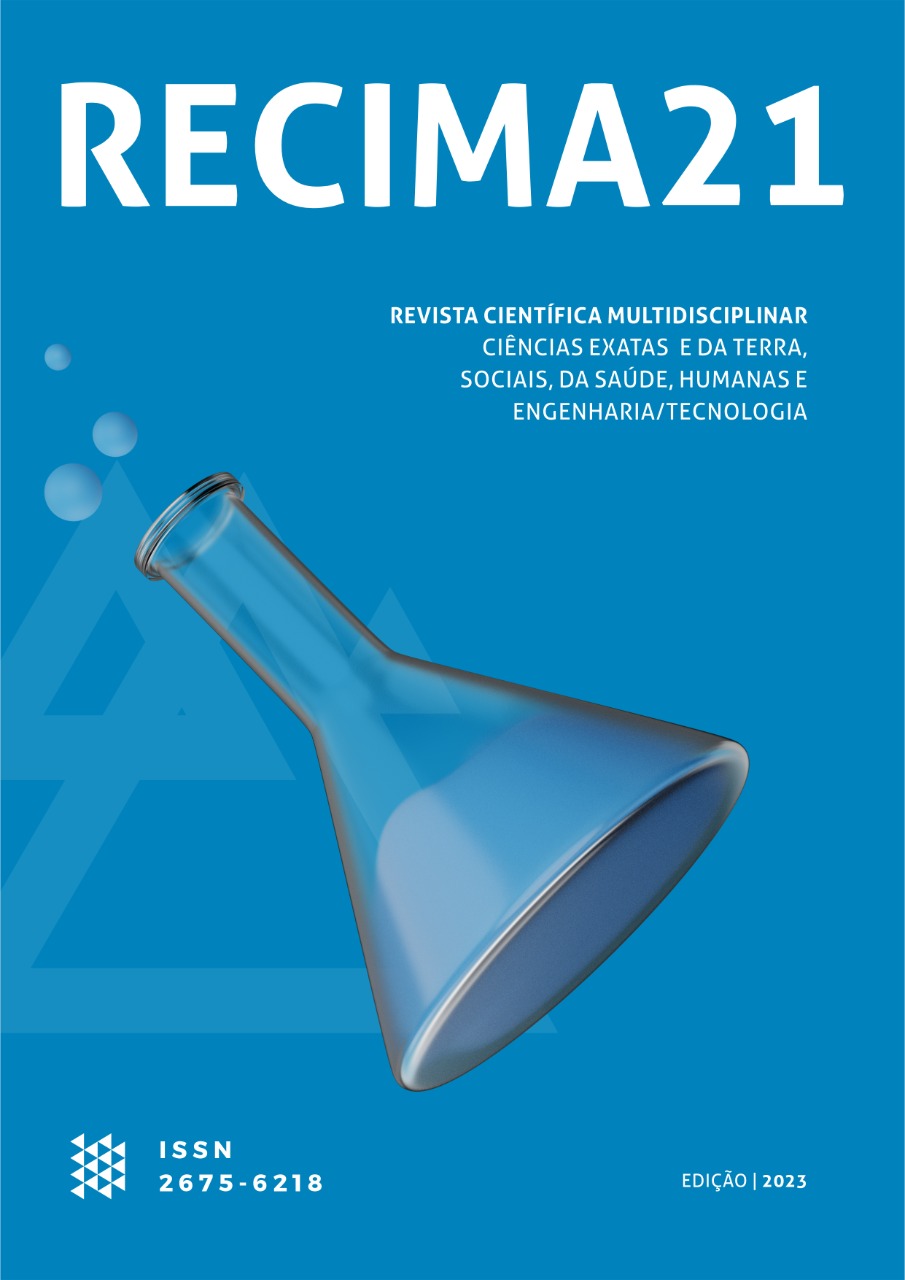PARACETAMOL HEPATOTOXICITY
DOI:
https://doi.org/10.47820/recima21.v4i3.2869Keywords:
Paracetamol, Hepatotoxicity, IntoxicationAbstract
Paracetamol has been marketed since the 1950s, being a drug widely accessible to the population because it does not need a medical prescription, is low cost and widely distributed, in addition to presenting medium analgesia, high antipyretic action and low antipyretic action. inflammatory effect compared to other drugs of the same class. Although it is considered safe in therapeutic doses, overdoses can cause severe liver damage. In this context, the present review aims to highlight the main factors that predispose paracetamol hepatotoxicity, as well as to show its mechanisms of hepatotoxicity. It is understood that paracetamol is one of the drugs most used indiscriminately by the world's population, resulting in high rates of self-medication. Thus, this drug, in high and repeated doses, plays a toxic role in the body, as can be seen through in vitro experiments, which attested to its potential for glutathione depletion, which disables the body from carrying out detoxification. Given this, as the liver is the main organ that metabolizes paracetamol, overdose of such a drug causes liver damage in three ways, such as overdose, CYP450 oxidation and hepatocyte depletion. However, it is observed that overdose is the most common toxicity factor due to recurrent poisoning, since it does not exclude a specific age group, affecting both children and the elderly.
Downloads
References
ALVES, Bianca Menezes Torres; HI, Edgar Matias Bach. Hepatotoxicidade induzida pelo uso excessivo de paracetamol. UNILUS Ensino e Pesquisa, v. 17, n. 49, p. 226-238, 2021.
BLIEDEN, Marissa et al. A perspective on the epidemiology of acetaminophen exposure and toxicity in the United States. Expert review of clinical pharmacology, v. 7, n. 3, p. 341-348, 2014.
BUCARETCHI, Fábio et al. Acute liver failure in a term neonate after repeated paracetamol administration. Revista Paulista de Pediatria, v. 32, p. 144-148, 2014.
CAIRES, Cassia Regina suzuki; BARONI, Caroline Córdova; PEREIRA, Luis Lenin Vicente. Intoxicação Medicamentosa Com Foco Nos Efeitos Do Paracetamol. Revista Científica, [s. l.], v. 1, n. 1, 2018.
CHIEW, Angela L.; BUCKLEY, Nicholas A. Acetaminophen poisoning. Critical care clinics, v. 37, n. 3, p. 543-561, 2021.
DE SOUZA, Amanda Cabral et al. Hepatotoxicidade associada ao uso de paracetamol: revisão sistemática. Brazilian Journal of Development, v. 7, n. 11, p. 107073-107085, 2021.
EGÍDIO, Ana Carolina de Matos et al. Atuação do farmacêutico no processo de intoxicação por analgésicos não-opióides e anti-inflamatórios não-esteroides (AINES). Revista Ibero-Americana de Humanidades, Ciências e Educação, v. 7, n. 9, p. 884-894, 2021.
FERREIRA, Francisca das Chagas et al. O impacto da prática da automedicação no Brasil: Revisão Sistemática. Brazilian Applied Science Review, v. 5, n. 3, p. 1505-1518, 2021.
HEARD, Kennon et al. Toxicity from repeated doses of acetaminophen in children: assessment of causality and dose in reported cases. American journal of therapeutics, v. 21, n. 3, p. 174, 2014.
MOWRY, James B. et al. 2014 annual report of the american association of poison control centers’ national poison data system (NPDS): 32nd annual report. Clinical toxicology, v. 53, n. 10, p. 962-1147, 2015.
NABI, Tauseef et al. Role of N-acetylcysteine treatment in non-acetaminophen-induced acute liver failure: A prospective study. Saudi journal of gastroenterology, v. 23, n. 3, p. 169, 2017.
LOPES, Juliana; MATHEUS, Maria Eline. Risco de hepatotoxicidade do Paracetamol (Acetaminofem). Rev. Bras. Farm, v. 93, n. 4, p. 411-14, 2012.
QUEIROZ, Thallita Pereira et al. Dipirona versus paracetamol no controle da dor pós-operatória. Revista de Odontologia da UNESP, v. 42, p. 78-82, 2013.
SALES, Ibrahim et al. Use of acetylcysteine for non-acetaminophen-induced acute liver failure. Annals of Hepatology, v. 12, n. 1, p. 6-10, 2013.
TORRES, Luciana Vilar et al. Hepatotoxicidade do paracetamol e fatores predisponentes. Revista de ciências da saúde Nova Esperança, v. 17, n. 1, p. 93-99, 2019.
VIEIRA, Ariane Lombarde; FRANÇA, Gustavo Galvão. As consequências no consumo indiscriminado do paracetamol e orientação farmacêutica à promoção ao uso racional. Revista Acadêmica Oswaldo Cruz. São Paulo, v. 6, n. 6, p. 1-12, 2015.
XAVIER, Mateus Silva et al. Automedicação e o risco à saúde: uma revisão de literatura. Brazilian Journal of Health Review, v. 4, n. 1, p. 225-240, 2021.
ZANARDO, Carla Helfenstein et al. Intoxicação por paracetamol. Acta méd.(Porto Alegre), v. 34, 2013.
WU, Shijin; ZHANG, Lili; CHEN, Jianmeng. Paracetamol in the environment and its degradation by microorganisms. Applied microbiology and biotechnology, v. 96, p. 875-884, 2012.
Downloads
Published
How to Cite
Issue
Section
Categories
License
Copyright (c) 2023 RECIMA21 - Revista Científica Multidisciplinar - ISSN 2675-6218

This work is licensed under a Creative Commons Attribution 4.0 International License.
Os direitos autorais dos artigos/resenhas/TCCs publicados pertecem à revista RECIMA21, e seguem o padrão Creative Commons (CC BY 4.0), permitindo a cópia ou reprodução, desde que cite a fonte e respeite os direitos dos autores e contenham menção aos mesmos nos créditos. Toda e qualquer obra publicada na revista, seu conteúdo é de responsabilidade dos autores, cabendo a RECIMA21 apenas ser o veículo de divulgação, seguindo os padrões nacionais e internacionais de publicação.













